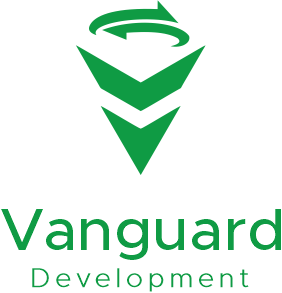Building Success: Key Metrics to Consider in Large Project Financing
When financing large-scale projects, understanding key financial metrics is essential to making informed decisions that foster success. From assessing risk and returns to monitoring cash flow, these metrics serve as the backbone of effective project management, offering stakeholders a clear view of a project’s viability and financial health. Below, we explore the essential metrics to consider in large project financing, helping investors, developers, and lenders align on objectives and achieve their goals.
1. Loan-to-Value Ratio (LTV)
The Loan-to-Value (LTV) ratio is a critical measure of leverage, expressing the loan amount as a percentage of the project’s total value. This ratio helps determine the risk level associated with the project from a lender’s perspective. Typically, a lower LTV ratio indicates lower risk for the lender, as it shows a substantial equity buffer in case of downturns or market fluctuations.
- Calculation: LTV Ratio=Loan AmountAppraised Property Value×100\text{LTV Ratio} = \frac{\text{Loan Amount}}{\text{Appraised Property Value}} \times 100LTV Ratio=Appraised Property ValueLoan Amount×100
- Best Practices: Aim for an LTV ratio below 80% to secure favorable financing terms and demonstrate lower risk to lenders.
- Importance: A low LTV ratio enhances financing options and may lead to better interest rates, reducing the overall cost of financing.
2. Debt Service Coverage Ratio (DSCR)
The Debt Service Coverage Ratio (DSCR) measures a project’s ability to cover its debt obligations through operational income. A higher DSCR indicates that a project generates enough cash flow to meet debt payments, which is a positive signal to lenders and investors about the project’s profitability and stability.
- Calculation: DSCR=Net Operating IncomeTotal Debt Service\text{DSCR} = \frac{\text{Net Operating Income}}{\text{Total Debt Service}}DSCR=Total Debt ServiceNet Operating Income
- Benchmark: A DSCR above 1.2 is typically required for most commercial projects, though some lenders prefer a ratio of 1.5 or higher.
- Importance: Ensures that the project can maintain debt payments without additional capital, reducing the risk of default and enhancing the project’s financial credibility.
3. Internal Rate of Return (IRR)
The Internal Rate of Return (IRR) is a measure of a project’s profitability, taking into account the time value of money. It reflects the rate at which a project breaks even on an investment, with a higher IRR indicating greater potential returns. For long-term, capital-intensive projects, the IRR provides insights into the financial efficiency of an investment over time.
- Calculation: IRR is calculated using cash flow projections and a discount rate, often requiring financial modeling software for accuracy.
- Target Range: For large-scale commercial projects, an IRR of 12-15% is considered competitive.
- Importance: Provides a benchmark to compare different projects or financing options, helping investors choose projects with optimal returns for the level of risk taken.
4. Net Present Value (NPV)
Net Present Value (NPV) is another essential metric in project financing, capturing the total value of projected cash flows over time. By discounting future cash flows to their present value, NPV shows whether the project is expected to generate profits or losses. A positive NPV indicates that the project’s cash flows exceed its costs, making it financially viable.
- Calculation: NPV is calculated by subtracting the initial investment from the sum of discounted future cash flows.
- Ideal Outcome: An NPV greater than zero is generally favorable, as it implies profitability.
- Importance: NPV helps stakeholders determine if a project is worth pursuing, providing a clear picture of profitability after all expenses and financing costs.
5. Cash-on-Cash Return
Cash-on-cash return measures the return on the actual cash invested, offering insights into the liquidity and efficiency of the investment. This metric is particularly useful for evaluating how well a project is generating cash flow relative to the initial investment, without accounting for any borrowed funds.
- Calculation: Cash-on-Cash Return=Annual Pre-Tax Cash FlowTotal Cash Invested×100\text{Cash-on-Cash Return} = \frac{\text{Annual Pre-Tax Cash Flow}}{\text{Total Cash Invested}} \times 100Cash-on-Cash Return=Total Cash InvestedAnnual Pre-Tax Cash Flow×100
- Typical Targets: For commercial projects, a cash-on-cash return of 8-12% is often deemed acceptable.
- Importance: This metric enables investors to assess the immediate cash benefits of a project, making it easier to compare potential investments on liquidity and cash generation.
6. Break-Even Point
The break-even point is the point at which the project’s total revenue covers its total costs, marking the threshold for profitability. For large projects, reaching break-even often takes time, so understanding this point is crucial for managing risk and planning financing strategies.
- Calculation: The break-even point is found by dividing total fixed costs by the contribution margin per unit (in cases where revenue can be divided into units).
- Insight: A faster break-even indicates that the project is financially sustainable more quickly, which appeals to investors and lenders.
- Importance: Knowing the break-even point helps set timelines for when the project will start generating positive returns, aiding in financial planning and forecasting.
7. Total Project Cost Per Unit
For projects involving construction or development, understanding the cost per unit is essential. Whether it’s cost per square foot for a commercial building or cost per room for a hotel, this metric helps investors evaluate whether the project is being developed cost-effectively.
- Calculation: Total Cost Per Unit=Total Project CostTotal Units Developed\text{Total Cost Per Unit} = \frac{\text{Total Project Cost}}{\text{Total Units Developed}}Total Cost Per Unit=Total Units DevelopedTotal Project Cost
- Benchmarking: Compare this with industry standards to ensure the project is cost-competitive.
- Importance: Helps in setting pricing strategies and ensuring that the project is financially viable in comparison to similar projects in the market.
8. Return on Equity (ROE)
Return on Equity (ROE) measures the profitability of the project based on the amount of equity invested. It shows how effectively the project is utilizing investor funds to generate returns, a key metric for stakeholders evaluating their return on investment.
- Calculation: ROE=Net IncomeEquity Investment×100\text{ROE} = \frac{\text{Net Income}}{\text{Equity Investment}} \times 100ROE=Equity InvestmentNet Income×100
- Target Range: A typical ROE of 10-15% is considered healthy for large-scale projects.
- Importance: ROE provides a clear measure of performance from an investor’s perspective, influencing decisions about whether to continue or expand their investment.
9. Payback Period
The payback period measures the time required for the project to repay its initial investment, which is crucial for investors seeking timely returns. Shorter payback periods are generally favorable, as they indicate quicker recovery of funds and reduce exposure to market volatility.
- Calculation: The payback period is calculated by dividing the initial investment by the average annual cash flow.
- Ideal Timeframe: Projects with payback periods under five years are often considered low-risk.
- Importance: Knowing the payback period helps investors assess the time horizon for recouping their investment, assisting in financial planning and risk assessment.


Leave A Comment